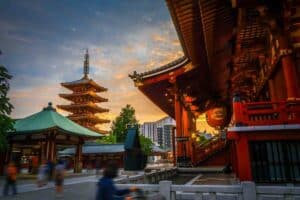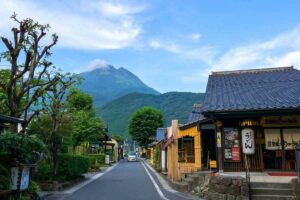The summer months are rolling by and soon the chill of autumn and winter will be on its way.
Prepare yourself for colder, darker evenings with the warming flavors of the Japanese nabe dish, a hot pot treat where diners cook an assortment of meats, vegetables, and noodles in a simmering broth right at the table.
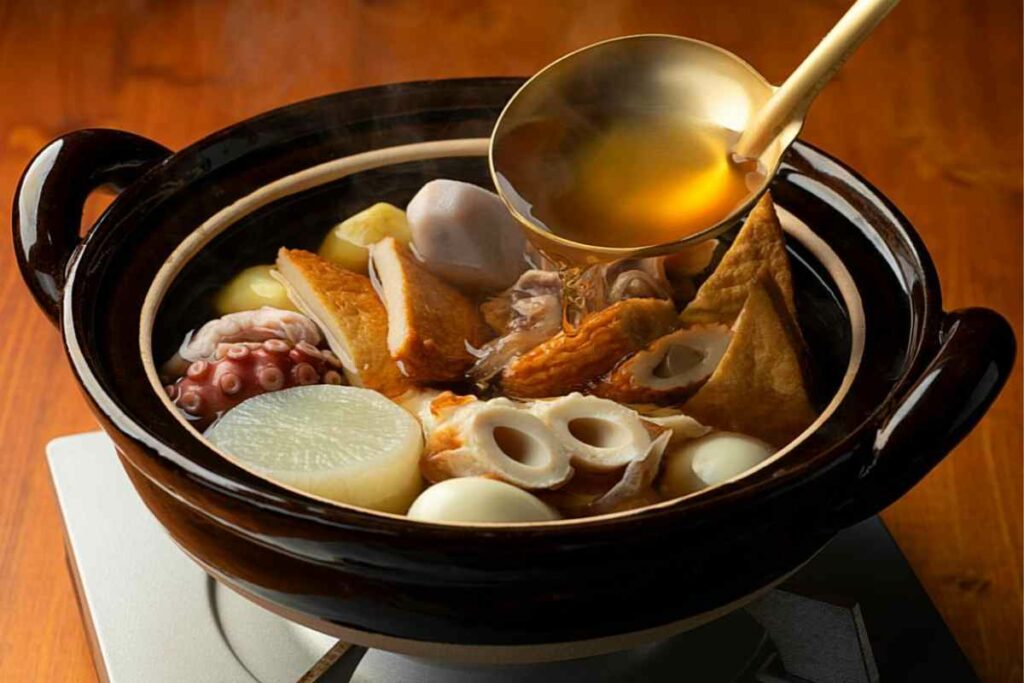
The key to a successful nabe is having the right pot, which should be able to retain heat and distribute it evenly.
Read on for my roundup of five of the best nabe hot pots for authentic flavor and a satisfying meal!
[lasso type=”table” id=”18″ link_id=”6745″]
Table of Contents
Authentic Japanese Nabe Needs the Right Hot Pot
A delicious nabe is an event. Gather family and friends around a burner on the dining table and assemble a delicious, lidded hot pot with ingredients that include meat, seafood, vegetables, noodles, and broth.
Read later – Nabe (Hot Pot) Guide
Nabe can even be enjoyed as a decadent meal for one too, with a smaller pot packed with your favorites and a rich dashi broth!
The nabe pot is essential to making this traditional Japanese food that has been enjoyed for centuries.
Nabe pots are made from various materials such as clay, cast iron, and stainless steel. Each material has its pros and cons, and the choice ultimately depends on personal preference.
These pots also come in different sizes so can select a pot that is suitable for the number of people you plan to serve.
The key types of Nabe pot include:
- Donabe: a traditional Japanese clay pot that is perfect for slow-cooking stews and soups.
- Shabu-shabu: a nabe pot that is ideal for cooking thinly sliced meat and vegetables.
- Yosenabe: a nabe pot that can be used to cook ingredients, including seafood, vegetables, and meat.
- Sukiyaki: a shallow iron nabe pot that is perfect for cooking thinly sliced beef and vegetables.
5 Best Nabe (Hot Pot) Pots Revealed
I’m looking for a nabe pot of my own, so I’ve put in the hours to research and test various nabe pots to identify the ones that are the best in terms of durability, heat retention, and ease of use.
Here is my shortlist for the best nabe hot pot for a heartwarming meal.
Best Nabe (Hot Pot) Pots: Buying Guide
Here are the key features I looked for to find the best Nabe pot.
Nabe Pot Material
The nabe pot cooks your hot pot supper to perfection. Choose rustic clay pots (Donabe) or a heat-conductive material, such as cast iron or stainless steel.
A good quality nabe pot uses materials that distribute heat evenly, so your food is cooked thoroughly.
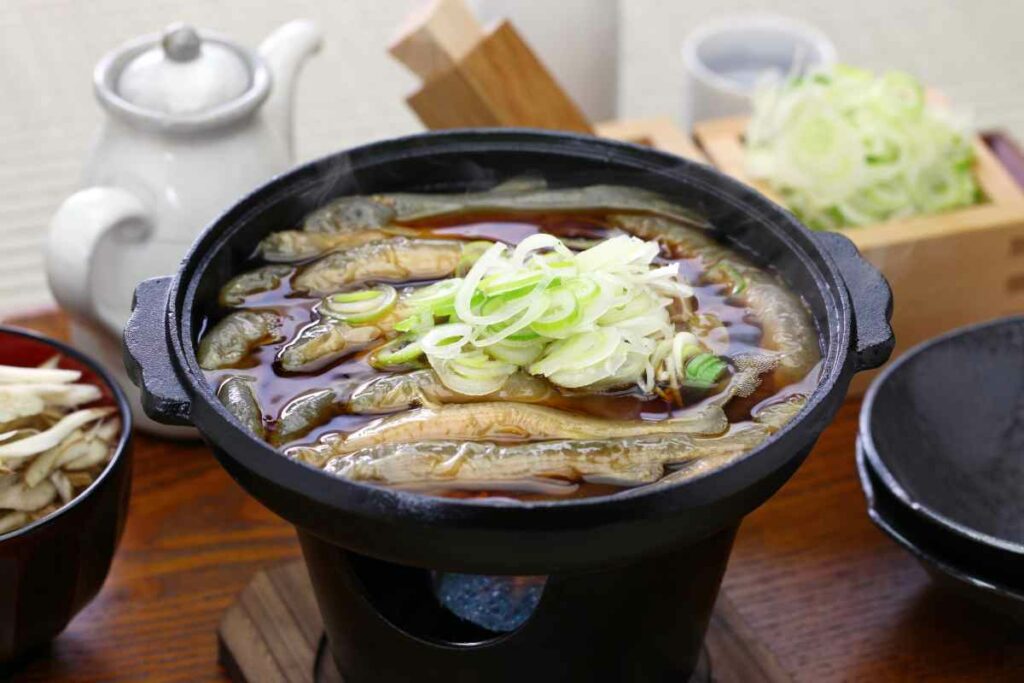
Nabe Pot Size
The size of your Nabe pot will depend on how many people you plan on serving. Cooking nabe for a large group requires a pot that is at least 12 inches in diameter.
If you’re cooking for a smaller group, a pot that is 8-10 inches in diameter should suffice.
Shape
The shape of your Nabe pot will also affect how your food is cooked. Choose from round pots that are ideal for cooking meat and vegetables, while a rectangular pot is better suited for cooking whole fish as part of the meal.
Nabe Pot Lid
The lid of your Nabe pot needs to be a tight-fitting lid that will keep the steam inside so your food is cooked evenly. Look for pots that come with a steam vent, allowing excess steam to escape.
You may also like 📖
Nabe Pot Accessories
Some Nabe pots come with helpful accessories such as a burner or a strainer. These accessories can be helpful, but they’re not necessary.
Best Nabe (Hot Pot) Pots: Frequently Asked Questions
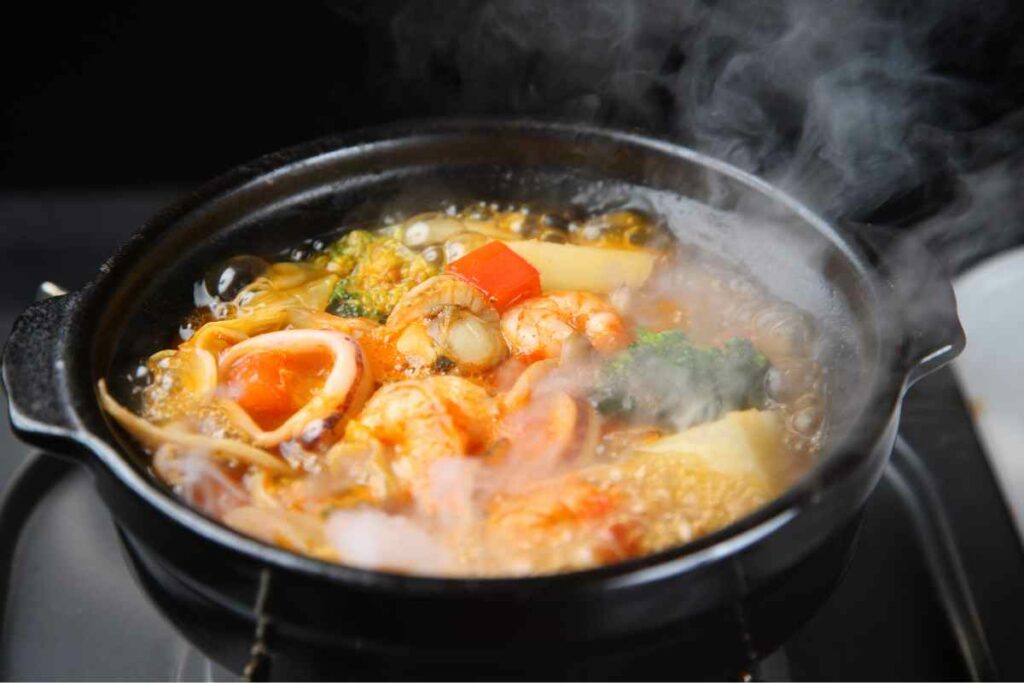
What is the best soup base for a Japanese hot pot?
What is the most popular Japanese hot pot?
How do you make chanko nabe?
What are some traditional nabe ingredients?
Conclusion and final thoughts 💭
For me the TRUMDAKE 7″ Cast Iron Japanese Sukiyaki Pot takes the prize as the best Pot. The reviews on Amazon and other shopping stores also see to backup my choice.
Hopefully, the warmth and aromas of delicious nabe will stave off the cold of winter and keep me well-fed until spring. I’ll certanly be using my new pot to try out some amazing new recipes.
- A Traveler’s Guide to Honshu (Japan’s largest Island)
- Best Snow Monkey Destinations In Japan (My Top 6 Picks)
- Best Marinas in Japan (10 Finest Waterfront Marinas)
- Discover Yufuin Floral Village: The REAL Ghibli Village
- Best Time to Visit Japan Alpine Route
- What’s Unique about Tokyo Disneyland Resort?

